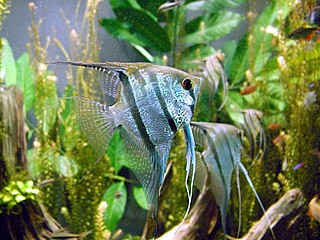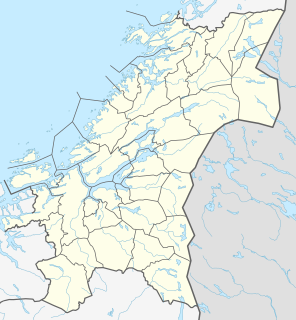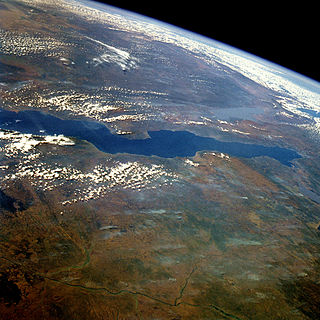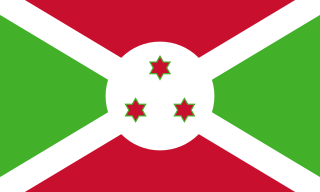
The Great Lakes, also called the Laurentian Great Lakes and the Great Lakes of North America, are a series of interconnected freshwater lakes primarily in the upper mid-east region of North America, on the Canada–United States border, which connect to the Atlantic Ocean through the Saint Lawrence River. They consist of Lakes Superior, Michigan, Huron, Erie, and Ontario, although hydrologically, there are four lakes, Superior, Erie, Ontario, and Michigan-Huron. The connected lakes form the Great Lakes Waterway.

Lake Erie is the fourth-largest lake of the five Great Lakes in North America, and the eleventh-largest globally if measured in terms of surface area. It is the southernmost, shallowest, and smallest by volume of the Great Lakes and therefore also has the shortest average water residence time. At its deepest point Lake Erie is 210 feet deep.

Lake Ontario is one of the five Great Lakes of North America. It is surrounded on the north, west, and southwest by the Canadian province of Ontario, and on the south and east by the American state of New York, whose water boundaries meet in the middle of the lake. Ontario, Canada's most populous province, was named for the lake. Many of Ontario's most populous cities, including Toronto, Canada's most populous city, and Hamilton, are on the lake's northern or western shores. In the Huron language, the name Ontarí'io means "Lake of Shining Waters". Its primary inlet is the Niagara River from Lake Erie. The last in the Great Lakes chain, Lake Ontario serves as the outlet to the Atlantic Ocean via the Saint Lawrence River. It is the only Great Lake not to border the state of Michigan.

Trout is the common name for a number of species of freshwater fish belonging to the genera Oncorhynchus, Salmo and Salvelinus, all of the subfamily Salmoninae of the family Salmonidae. The word trout is also used as part of the name of some non-salmonid fish such as Cynoscion nebulosus, the spotted seatrout or speckled trout.

Cichlids are fish from the family Cichlidae in the order Cichliformes. Cichlids were traditionally classed in a suborder, Labroidei, along with the wrasses (Labridae), in the order Perciformes but molecular studies have contradicted this grouping. The closest living relatives of cichlids are probably the convict blennies and both families are classified in the 5th edition of Fishes of the World as the two families in the Cichliformes, part of the subseries Ovalentaria. This family is both large and diverse. At least 1,650 species have been scientifically described, making it one of the largest vertebrate families. New species are discovered annually, and many species remain undescribed. The actual number of species is therefore unknown, with estimates varying between 2,000 and 3,000.

Lake Baikal is a rift lake in Russia, located in southern Siberia, between Irkutsk Oblast to the northwest and the Buryat Republic to the southeast.

Lake Malawi, also known as Lake Nyasa in Tanzania and Lago Niassa in Mozambique, is an African Great Lake and the southernmost lake in the East African Rift system, located between Malawi, Mozambique and Tanzania.

Lake Victoria is one of the African Great Lakes. The lake was named after Queen Victoria by the explorer John Hanning Speke, the first Briton to document it. Speke accomplished this in 1858, while on an expedition with Richard Francis Burton to locate the source of the Nile River.

Lake Titicaca is a large, deep lake in the Andes on the border of Bolivia and Peru, often called the "highest navigable lake" in the world. By volume of water and by surface area, it is the largest lake in South America. Lake Maracaibo has a larger surface area, but it is a tidal bay, not a lake.

The zebra mussel is a small freshwater mussel. This species was originally native to the lakes of southern Russia and Ukraine. However, the zebra mussel has been accidentally introduced to numerous other areas, and has become an invasive species in many countries worldwide. Since the 1980s, they have invaded the Great Lakes and the Hudson River.

The Gippsland Lakes are a network of lakes, marshes and lagoons in east Gippsland, Victoria, Australia covering an area of about 354 square kilometres (137 sq mi). The largest of the lakes are Lake Wellington, Lake King and Lake Victoria. The lakes are collectively fed by the Avon, Thomson, Latrobe, Mitchell, Nicholson and Tambo rivers.

Bonny Lake State Park is a former state park located in Yuma County, Colorado near Hale. Created in 1966 and closed in 2011, Bonny Lake was the easternmost state park in Colorado.
Bathybagrus is a genus of claroteid catfishes native to Africa where they are only found in Lake Tanganyika.
Bathybagrus tetranema is a species of claroteid catfish endemic to Lake Tanganyika where it has only been found in the waters within the borders of Zambia. It grows to a length of 17.0 cm SL.
The kukumai is a species of claroteid catfish endemic to Lake Tanganyika along the border of Burundi, the Democratic Republic of the Congo, Tanzania, and Zambia. It reaches a length of 63 cm TL and is a minor component of local commercial fisheries.
Bathybagrus graueri is a species of claroteid catfish endemic to Lake Tanganyika on the border of Burundi, the Democratic Republic of the Congo, Tanzania, and Zambia. It grows to a length of 36.0 cm TL and is a component of local commercial fisheries.
Bathybagrus stappersii is a species of fish endemic to Lake Tanganyika on the border of Burundi, the Democratic Republic of the Congo, Tanzania, and Zambia. It grows to a length of 45.0 cm SL and is a component of local subsistence fisheries.

Fuxian Lake stretches out through Chengjiang, Jiangchuan and Huaning Counties in Yunnan Province, spanning an area of 212 square kilometers. The lake is ranked third-largest in Yunnan, after Dian Lake and Erhai Lake. Also the deepest lake in Yunnan, it is 155 meters deep at its greatest depth. It is also the third-deepest fresh water lake in China, after Tianchi and Kanas Lake.

Kvesjøen is a lake in Lierne municipality in Trøndelag county, Norway. The lake lies just inside the Norwegian border with Sweden, on the west end of the lake Murusjøen. The 19.09-square-kilometre (7.37 sq mi) lake sits 320 metres (1,050 ft) above sea level. The lake contains at least six different fish species; Arctic char, burbot, two different species of trout, grayling and pike.

















